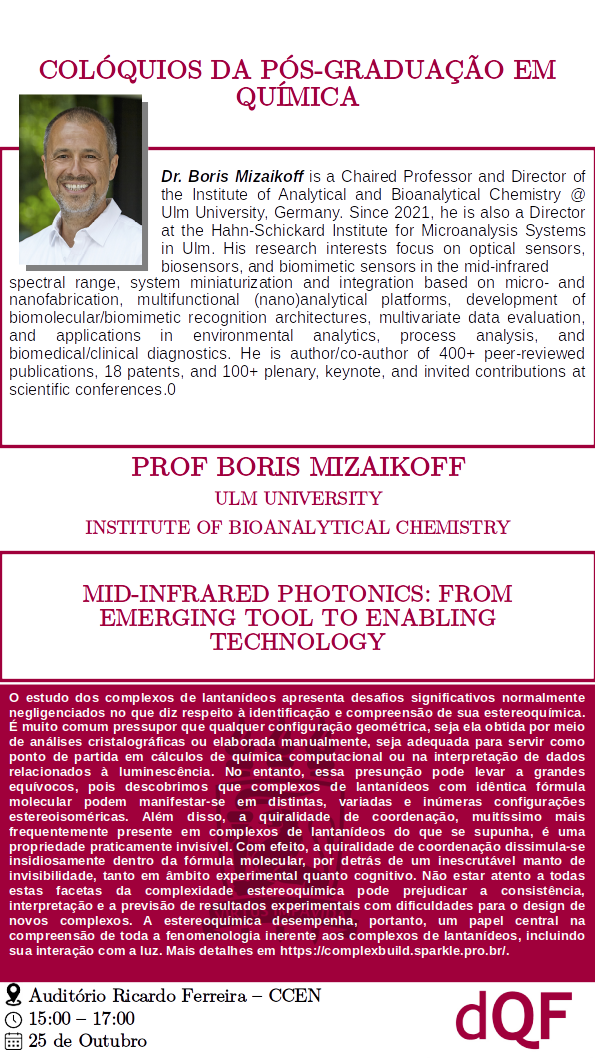Todas as Notícias
- UFPE/
- Institucional/
- Superintendências/
- Superintendência de Comunicação (Supercom)/
- Agência de Notícias (Ascom)/
- Notícias/
- Professor Boris Mizaikoff, da Unidade de Ulm, fala sobre fotônica em colóquio no Departamento de Química Fundamental
 Notícias Notícias
Notícias Notícias
Professor Boris Mizaikoff, da Unidade de Ulm, fala sobre fotônica em colóquio no Departamento de Química Fundamental
Evento será realizado amanhã (25), das 15h às 17h, no Auditório Ricardo Ferreira, que fica no Centro de Ciências Exatas e da Natureza (CCEN) da Universidade

Diretor do Institute of Bioanalytical Chemistry, da Unidade de Ulm (Alemanha), o professor Boris Mizakoff participa dos colóquios da Pós-Graduação em Química. Sensores ópticos, biossensores e sensores biomiméticos na faixa espectral do infravermelho médio estão entre os interesses do pesquisador, que apresenta a palestra “Mid-infrared photonics: from emerging tool to enabling technology”, amanhã (25), das 15h às 17h, no Auditório Ricardo Ferreira, que fica no Centro de Ciências Exatas e da Natureza (CCEN) da Universidade Federal de Pernambuco (UFPE).
Resumo em inglês
Vibrational spectroscopies – and especially infrared spectroscopy – play an increasingly important role in modern biodiagnostics, environmental analysis, and food safety/quality scenarios. This has led to the evolution of mid-infrared photonics from an emerging tool into an enabling technology. With applications ranging from non-invasive exhaled breath analysis to in-vivo assessment of cartilage damage, mid-infrared (MIR; 3-20 µm) photonics ranges among the most flexible molecular sensing platforms nowadays available. In particular, with the emergence of quantum and interband cascade laser technology, the on-chip hybridization and/or integration of entire MIR sensing devices is on the horizon ultimately leading to IR-lab-on-chip systems. The inherent molecular selectivity of MIR signatures enables studying small molecules (e.g., volatile organic compounds; VOCs) in the gas phase, as well as biomacromolecules (e.g., proteins) in the liquid phase at unprecedented detail in a label-free and non-destructive fashion. Last but not least, the combination with advanced multivariate data evaluation and deep learning algorithms facilitates analyses in real-world complex mixtures in a wide range of demanding scenarios. The discussion of latest MIR photonic technologies in this presentation we will be augmented by highlight applications underlining the utility of next-generation MIR photonics.
Mais informações
Departamento de Química Fundamental da UFPE
(81) 2126.8444
secgdqf@ufpe.br





